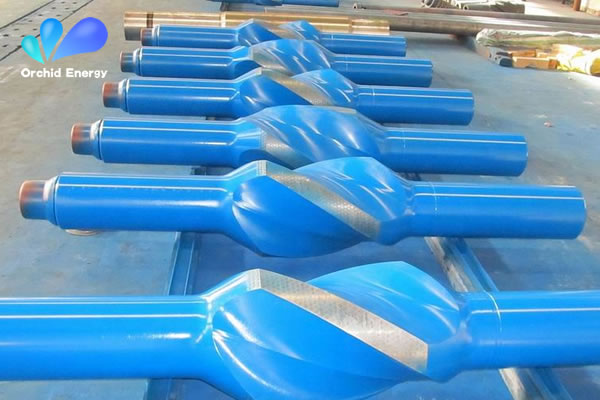Enhancing Drilling Efficiency: The Role of Stabilizers in the Oil and Gas Industry

1. What are Stabilizers?
Stabilizers, also known as drilling stabilizers or drillstring stabilizers, are specialized downhole drilling tools that provide stability to the drill string and maintain wellbore trajectory control during drilling operations. They are typically placed above or below the drill bit and can be adjusted to control the amount of stabilizing force applied.
2. The Function of Stabilizers:
- Maintaining Wellbore Stability: Stabilizers prevent the drill string from deviating or veering off course during drilling. By adding weight to the bottom of the drill string, they keep it centered within the wellbore, reducing vibrations and minimizing the risk of getting stuck or losing control of the drilling process.
- Enhancing Drilling Performance: Stabilizers improve the drilling performance by reducing the wobbling or whipping effect of the drill string. By minimizing lateral movement, stabilizers allow the drill bit to maintain a consistent trajectory, resulting in more precise wellbore alignment and targeting the desired formation.
- Reducing Drilling Hazards: Wellbore instability can lead to various drilling hazards, such as lost circulation, differential sticking, or wellbore collapse. Stabilizers help mitigate these risks by providing the necessary support and preventing the borehole from collapsing or destabilizing due to the drilling process.

3. Types of Stabilizers:
- Non-Rotating Stabilizers: These stabilizers are designed to remain stationary during the drilling process while the drill string rotates. They provide stability and maintain a centered borehole while minimizing the wear and tear on the stabilizer body.
- Rotary Stabilizers: These stabilizers rotate with the drill string, improving weight distribution and wellbore stability during drilling. They are commonly used in challenging drilling environments, such as directional drilling or drilling through rock formations prone to deviation.
- Adjustable Stabilizers: These stabilizers allow for real-time adjustments in stabilizing force, enabling drilling engineers to fine-tune the drilling process based on the changing downhole conditions. They provide flexibility and adaptability, optimizing drilling performance in varying formations.
4. Benefits of Stabilizers:
- Enhanced Drilling Efficiency: Stabilizers maintain a consistent wellbore trajectory, reducing the need for corrective measures and minimizing non-productive time. This results in improved drilling efficiency and increased overall productivity.
- Improved Drilling Safety: Wellbore stability is crucial for drilling safety. Stabilizers help mitigate drilling hazards, minimize the risk of equipment failure, and ensure a smooth drilling operation, safeguarding the personnel and equipment involved.
- Increased Resource Recovery: Accurate wellbore alignment achieved through stabilizers allows for efficient extraction of hydrocarbon resources. By optimizing drilling performance, stabilizers contribute to maximizing resource recovery and cost-effective operations.

Conclusion:
Stabilizers play a pivotal role in the oil and gas industry, enabling smooth and safe drilling operations. By providing wellbore stability, minimizing drilling hazards, and enhancing drilling efficiency, stabilizers contribute to maximizing resource recovery and overall operational success. Their diverse types and adaptability make them crucial tools for drilling in challenging environments. As the industry continues to evolve, stabilizers will remain essential in achieving optimal drilling performance and ensuring the sustainable extraction of valuable energy resources.




